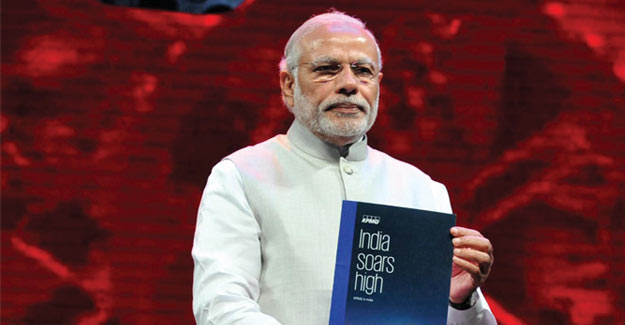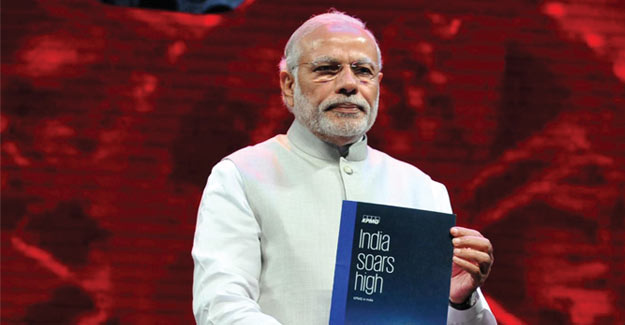
Make In India Week: Celebrating India’s Path To Glory
Launched in 2014 by Prime Minister Modi, Make in India is gaining momentum. A national programme designed to facilitate investment, foster innovation, enhance skill development and build best-in-class manufacturing infrastructure was celebrated as a weeklong event in Mumbai that drew attention from the manufacturing community, local and global. Over 1,000 CEOs and 4,000 delegates representing 2,000 domestic and overseas firms were in Mumbai at an ostentatious event to showcase ‘Make in India’, which Prime Minister Narendra Modi presented as the biggest brand to emerge from the country. He said India was adding deregulation to its strengths of democracy, demography and demand, and promised to create an environment that propels India to be a global powerhouse of manufacturing.
The Industries Ministry has claimed that `15.2 lakh crore worth of investments were committed at the event. These include some by foreign firms such as Oracle (`2,749 crore) and Ascendas (`4,571 crore), but the list is dominated by Indian players making announcements to coincide with the occasion, including a `6,204-crore project by public sector undertaking Rashtriya Chemicals and Fertilizers. Textile industry has long been marked as a priority sector under the ‘Make in India’ initiative and being the second largest manufacturer of textiles in the world, this Make in India week saw a series of events lined up to elevate India’s position as a global player. With debates and discussions to understand the existing challenges and revitalise textile policies, several cultural events, fashion shows and textile and garment exhibitions added to the glamour.
On a serious and happy note Union Textiles Minister Santosh Gangwar declared that the long-awaited National Textile Policy is nearing finalisation and is likely to be notified before the end of April 2016. The new policy aims to achieve US$ 300 billion textile exports by 2024-25 and create an additional 35 million jobs. Keeping in view various domestic and international developments in the textile industry and the need for a roadmap, the Ministry of Textiles had initiated the process of reviewing the National Textiles Policy, 2000. Gangwar also threw light on area specific schemes, which have been formulated for the entire textile value chain. The government has also sharpened its focus on reducing logistic costs and transaction cost. On Regional Trade Block Agreements such as Trans Pacific Partnership (TPP), the minister mentioned that the government is working a Free Trade Agreement (FTA) with the European Union and holding discussions on the Regional Comprehensive Economic Partnership (RCEP). The government is also in the middle of reviewing existing trade agreements such as Indo-ASEAN FTA and Indo-Korea Comprehensive Economic Partnership Agreement.
The fashion segment was not quite far from the limelight and were indeed interested in their own way to revive Indian textiles. Veteran designers showcased new-age Banarasi and Maharashtra’s very own- Paithani weaves as part of the Make in India Week. More than 100 designers from all over India are today embracing the cause of Benarasi, an elaborate fashion show organised and powered by the textile ministry, saw Shaina NC champion the cause of reviving Maharashtra’s favourite weave Paithani with a contemporary twist.

Textile Excellence
If you wish to Subscribe to Textile Excellence Print Edition, kindly fill in the below form and we shall get back to you with details.








